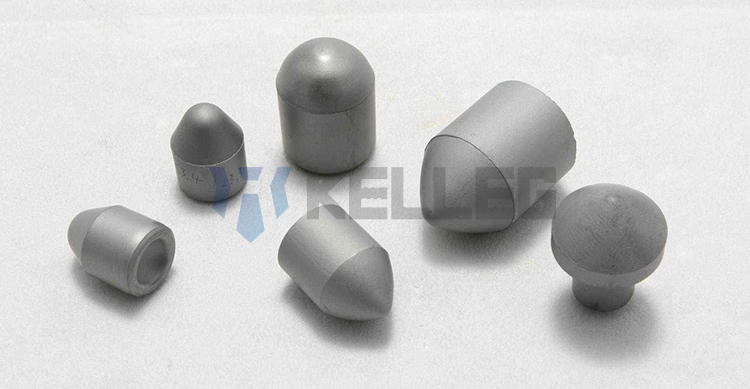2020 官网升级中!现在您访问官网的浏览器设备分辨率宽度低于1280px请使用高分辨率宽度访问。
The excellent performance of cemented carbide makes it widely used in military, aerospace, machining, metallurgy, oil drilling, mining tools, electronic communications, construction, and other fields. There are many grades of cemented carbide. The cemented carbide used for rock drilling should have two characteristics not easy to damage under impact load and high wear resistance. The correct choice of cemented carbide grade is important to ensure the effective use of rock drilling tools, so supply and demand must understand how to choose a carbide grade for rock drilling.

The selection of rock-drilling cemented carbide grades can start with impact rock-drilling cemented carbide and oil-drilling cemented carbide.
Impact rock drilling cemented carbide
1. According to different rock properties
Impact rock drilling requires carbides with good toughness because of impact loads. According to different rock hardness, YG6, YG8, YG8C, YG11C, YG13C, YG15 and other carbide grades are used. If the rock hardness and the impact load are large, high Co and coarse grain carbides should be selected. On the contrary, if the rock hardness and the impact load are small, medium cobalt and coarse-grained carbides should be selected.
2. According to the different impact energy of rock drills
Rock drill bit is born to cyclic stresses such as alternating tensile, compressive, bending, torsion, and stress corrosion during drilling. The working conditions of drill bit are very harsh. For extremely tough rocks and rock drills with high-impact energy, the focus should be on toughness, and carbide with high cobalt content should be used. For medium-hard, hard, hard and brittle rocks with high abrasiveness, the focus should be on wear resistance, and carbide with low cobalt content should be used.
When the impact energy is small, the specific power required to break the rock increases. Within a certain range, the impact energy increases, and the specific power required to crush the rock decreases. The stronger the rock, the higher the specific power at the same impact energy. In the case of higher impact energy, weaker rocks, or hard and brittle rock, the button bit has better adaptability than the chip bit. If the impact energy is too large, the rock will be crushed excessively and cause energy loss.
3. According to the different shape of rock drill bits
The surrounding carbide of the chip bit has a long rock drilling stroke and a large area, so the peripheral carbide wears faster than the central carbide and is easy to break. Moreover, the loading area of the chip bit carbide on the rock is small, and the boundary line is short, so the impact load per unit area is large.
The gauge buttons and middle buttons of button bit are reasonably distributed, the chiseling borne by each button is more balanced, and the wear is more even. The button bit carbide has a large loading area on the rock, a long boundary line, and a small impact load per unit area. Therefore, the binder content can be lower than that of chip bit when designing the carbide of button bit, and the WC grain can be finer.
Button bit is suitable for use with rock drills with high-impact energy. The impact energy of pneumatic rock drill is not enough, the drilling speed is not as fast as that of chip bit, and the ability to resist radial wear is not as good as that of chip bit. Because the impact energy of hydraulic rock drill is high, button bit should be used mainly. For tough rocks with serious abrasiveness, service life span of button bits is often not as long as that of chip bits.
Cemented carbide for oil drilling
The most important thing about cemented carbide for oil drilling is that the carbide is damaged at the bottom of the well. Therefore, it is desired that carbide has wear resistance based on better toughness. High cobalt and coarse-grain carbides should be designed and selected. Such as YG8C, YG11C, YG13C, etc.
In addition, the following should be paid attention to when choosing cemented carbide grades.
1. The physical properties of the rock, such as hardness, abrasiveness, grain size, and its characteristics (compactness and fissures, etc.).
2. Rock drill model.
3. The method of breaking rocks (including air pressure, etc.).
4. Equipment capacity.